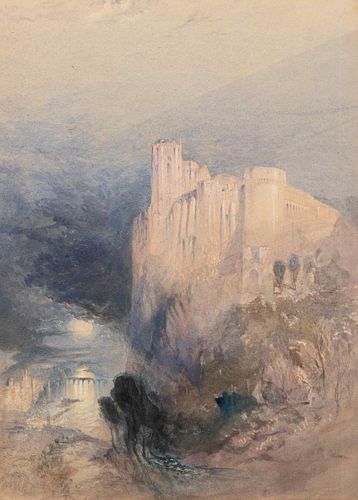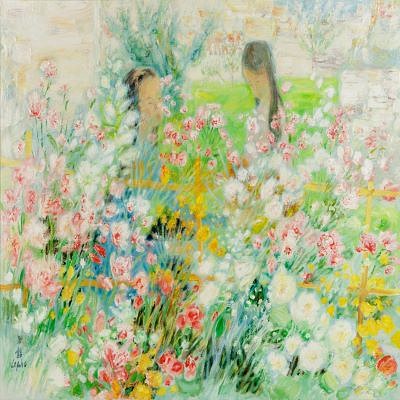Attributed to John Ruskin(British, 1819-1900)Amboise, c. 1840-45
Lot 131
About Seller
Hindman
1338 West Lake Street
Chicago, IL 60607
United States
Recognized as the Midwest's leading fine art auctioneers, Hindman Auctioneers has built a worldwide reputation based on a full service approach to the auction business tailored to meet the individual needs of our clients. Coming from a variety of educational backgrounds, specialists bring years of e...Read more
Categories
Estimate:
$10,000 - $15,000
Absentee vs Live bid
Two ways to bid:
- Leave a max absentee bid and the platform will bid on your behalf up to your maximum bid during the live auction.
- Bid live during the auction and your bids will be submitted real-time to the auctioneer.
Bid Increments
| Price | Bid Increment |
|---|---|
| $0 | $25 |
| $500 | $50 |
| $1,000 | $100 |
| $2,000 | $250 |
| $5,000 | $500 |
| $10,000 | $1,000 |
| $20,000 | $2,500 |
| $50,000 | $5,000 |
| $100,000 | $10,000 |
About Auction
By Hindman
Sep 30, 2020
Set Reminder
2020-09-30 11:00:00
2020-09-30 11:00:00
America/New_York
Bidsquare
Bidsquare : American and European Art
https://www.bidsquare.com/auctions/hindman-auctions/american-and-european-art-5534
Hindman Bidsquare@hindmanauctions.com
Hindman Bidsquare@hindmanauctions.com
- Lot Description
Attributed to John Ruskin
(British, 1819-1900)
Amboise, c. 1840-45
watercolor on paper
15 ¼ x 11 ¼ inches.
We would like to thank Stephen Wildman, Emeritus Professor of History of Art, Lancaster University, for assistance with the research and cataloging of this lot.
Lot essay:
Attributed to the artist John Ruskin, Amboise depicts the late fifteenth-century St. Hubert's Chapel, which rises above the chateau of Amboise along the River Loire in France. According to Stephen Wildman, Emeritus Professor of History of Art, Lancaster University, the lesser detail, especially in the foreground, points to this watercolor possibly being an early attempt at a more detailed and finished watercolor, also titled Amboise and dating from 1841 (Private Collection). The known watercolor was shown in the 2000 exhibition Ruskin, Turner, and the Pre-Raphaelites, held at the Tate, London (Robert Hewison, Ian Warrell and Stephen Wildman, no. 40, pg. 64, illus.).
The present Amboise falls within the period of the early 1840s, when Ruskin was deeply influenced by the work of Joseph Mallord William Turner, to the extent of attempting to capture Turner's style. In the process, Ruskin adopted and exaggerated the artist's mannerisms, including his propensity to distort the height of architectural motifs. In Praeterita he described the now lost preparatory drawing for the finished watercolor as 'highly laboured' and ''out of my head'; representing the castle as about seven hundred feet above the river, (it is perhaps eighty or ninety,) with sunset light on it, in imitation of Turner; and the moon rising behind it, in imitation of Turner; and some steps and balustrades (which are not there) going down to the river, in imitation of Turner; with the fretwork of St. Hubert's Chapel done very carefully in my own way, - I thought perhaps a little better than Turner.' (E.T. Cook and Alexander Wedderburn (eds.), The Works of John Ruskin, vol.XXXV, Praeterita, London, 1908, p. 302).
The supposition that the present watercolor is a first effort is supported by the fact that a greater degree of detail would have been needed for its conversion into an engraving. Engravings require more particularized visual elements to translate well into a finished print. This would have led Ruskin to complete a more finished version of Amboise. The engraving was executed by Frederick Goodall and was used to accompany Ruskin's long poem 'The Broken Chain', published under the signature 'J.R., Christ Church, Oxford' in the annuals of Friendship's Offering between 1840 and 1843. Part XIV includes the lines:
Those orbed towers obscure and vast,
That light the Loire with sunset last;
Those fretted groups of shaft and spire,
That crest Amboise's cliff with fire,
When, far beneath, in moonlight fail
The winds that shook the pausing sail;
The panes that tint with dyes divine
The altar of St. Hubert's shrine
About the scene, Ruskin declared that '[T]he chapel, which crowns the precipice, though small, is one of the loveliest bits of rich detail in France. In reality it is terminated by a small wooden spire, which I have not represented, as it destroyed the grandeur of the outline.' (E.T. Cook and Alexander Wedderburn (eds.), The Works of John Ruskin, vol.II, The Poems, London, 1903, pp. 169-170).
Condition
For condition inquiries please contact Mary Grace Bilby at marygracebilby@hindmanauctions.com - Shipping Info
-
Please refer to https://hindmanauctions.com/shipping-packing
-
- Buyer's Premium



 EUR
EUR CAD
CAD AUD
AUD GBP
GBP MXN
MXN HKD
HKD CNY
CNY MYR
MYR SEK
SEK SGD
SGD CHF
CHF THB
THB















